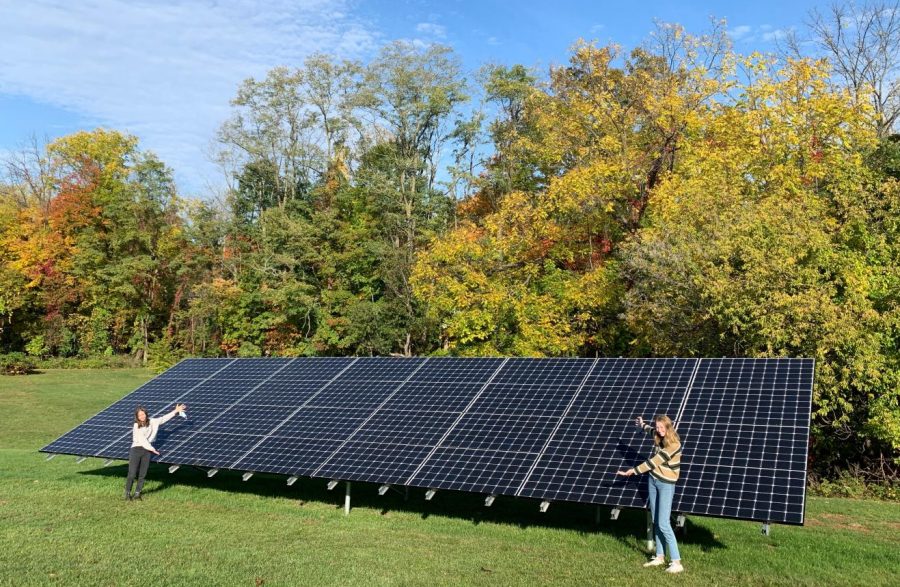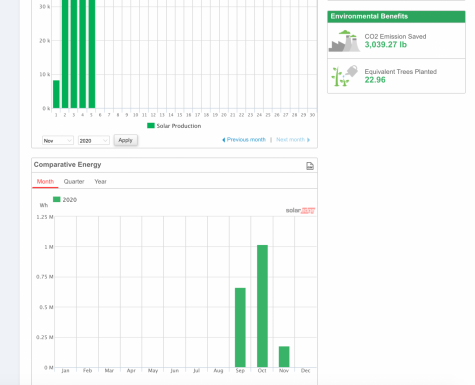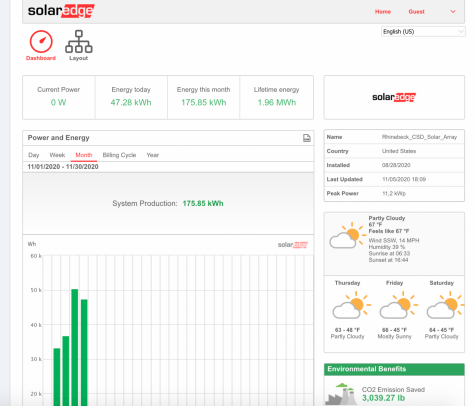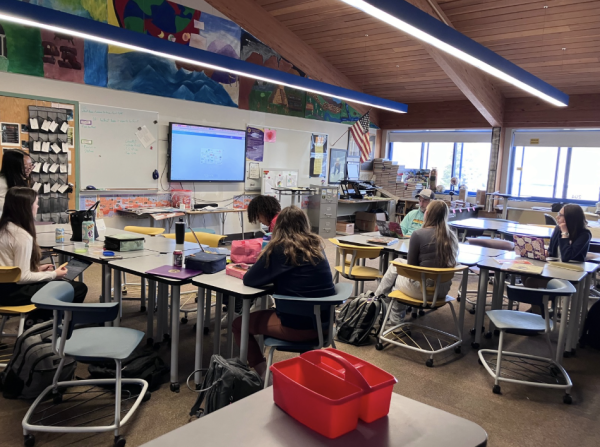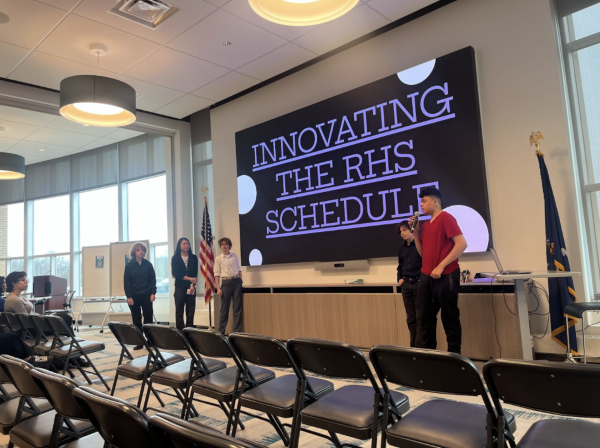Capitol Project Brings Solar Panels to RHS Campus
Rhinebeck Central School District takes steps to lower their environmental impact on the earth by installing solar panels, but is it enough?
Lulu Hart and Olivia Selby embrace the new solar panels on RHS campus.
In 2016, Rhinebeck residents approved a $12 million school budget proposal for Capital Improvements for the Rhinebeck Central School District.
As our Capital Improvements Project took shape, there was some consideration given to whether it would be beneficial to install solar panels at Rhinebeck High School.
According to the district website’s description of the plan, solar panels were not installed to address energy efficiency: “This project is expected to address needs in 5 areas: (1) health/safety/security, (2) energy efficiency: roofs/windows/doors/lighting, (3) building infrastructure, (4) educational space, and (5) exterior/fields/sitework.”
These improvements were to help the school district defray costs in the future.
EnergySage, a solar energy company in Boston, has completed research regarding the cost efficiency of installing solar panels for Dutchess County. According to their estimates, the cost of installing a five kilowatt system is about 13-17 thousand dollars, and the net 20 year savings are 24 to 33 thousand dollars. Additionally, the company points out that New York State offers very good rebates and tax credits to install solar.
But Rhinebeck Central School District decided against a larger investment in solar energy. In the end, it was decided to install a small demonstration of solar panels on the grounds and not a larger project on the roofs.
The installation of these solar panels was completed in the summer of 2020. They are now visible on the field below the faculty parking lot, to the left as you approach the RHS building.
Reactions have been mixed.
“It’s a great step in the direction of sustainable and clean energy, especially since solar wasn’t supported by the school in previous years,” Eleanor Butler, one of the presidents of the Environmental Club, said.
While we might assume that solar panels were proposed in order to improve our building’s energy efficiency, the main tools to achieve this goal are actually the new windows, doors and roofing installed during the Capital Project.
In fact, the solar panels were proposed mainly as an educational tool, according to Sheldon Tieder, Director of Facilities and Operations.
Dr. Davenport, Principal of RHS, emphasized this point.
“Science teachers have been provided with access to a dashboard that monitors the solar panels, and they will have the ability to design a curriculum that allows students to learn more about solar energy and the engineering practicalities that are required to use it,” said Davenport.
Will STEM classes soon enjoy this data analysis exercise?
“It seems the purpose of these panels is for educational use and data collection, but it’d be great if we could actually get more solar panels installed on the building’s roof to generate energy.” Mr. Rocco, Earth Science educator at RHS, said.
Although the solar panels were initially proposed as part of the capital improvement budget, it appears that the goal of improving energy efficiency has become secondary.
It remains to be seen the impact these solar panels will have on students as an educational resource.

